I'm new to wiring with resistors. My goal is to use a bucket on a someone's head and have direction LEDs within the bucket to guide the person through a maze. So using a 9 V battery to power, then go to 4 switches (left, right, up, down, each button will be pressed to light up and guide the person). The LEDs are 3 V each. Can I get just 1 resistor and put it before any of the switches? If I do and 2 switches are used will it dim the LEDs badly? Or should I just use a resistor at each LED?

simulate this circuit – Schematic created using CircuitLab